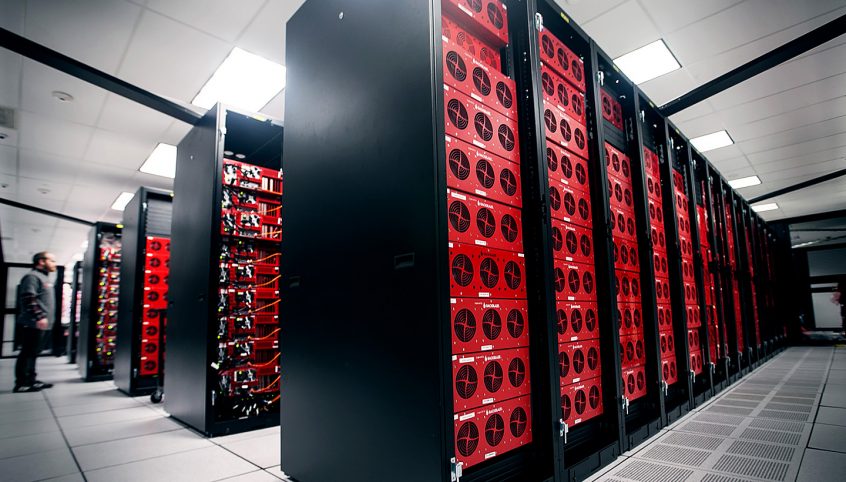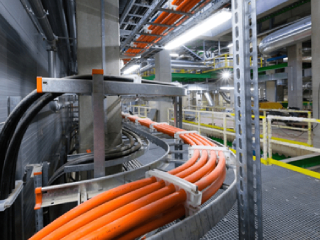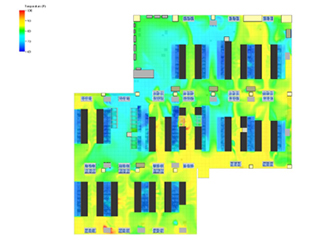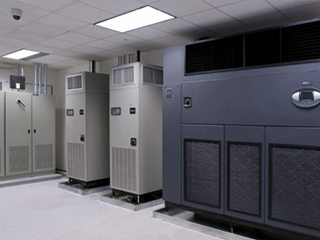Datacenter cooling dynamics are highly important. As data centers actively work on an extended timeframe, it is constantly discharging heat. Such heat is a result of power consumption to run the whole data center. Primarily the rack mounted servers are the source of heat.
An array of strategies are considered to eliminate heat in the data center. This includes hot or cold aisle containment. Efforts to adopt heat-efficient processors and cutting edge technologies such as liquid submersion cooling with dielectric fluids are being trialed.
Cooling methods are a straightforward endeavor to eliminate heat in the data center. It has gone from the traditional cooling techniques through built-in fans to a more advanced cooling method. Such advancement is necessary to tackle the new high-density data centers.
These cooling methods refer to (1) single-phase immersion and (2) rear door heat exchangers.
The Lowdown On Cooling Method

Photo Credit: ytimg.com
Rear Door Heat Exchanger (RDHx)
In principle, RDHx is designed to make efficient air cooling to a data center. It makes use of the cooling by-product from the transition of a liquid to gas. The cooling effect from the change is maximized by streaming the cold air close to the heat source.
RDHx functions are similar in principle to a car radiator. The rack rear doors are built with cooling fins. This way, the heat exhausted by the rack mounted hardware flows through the heat exchanger Some active heat exchangers have fans to help pull or push the air through. Other passive RDHx simple rely on the positive pressure made by the server fans. When the hot air passed through the cooling fins, the heat is exchanged by conduction from air to cooling fins. Refrigerant gases or cold water passing through pipes in the heat exchanger then carry this heat away
The heated fluid flows to a cooling distribution unit (CDU). The CDU is connected to an external water system. The water in the system is chilled, hence, changing the water temperature in the process.
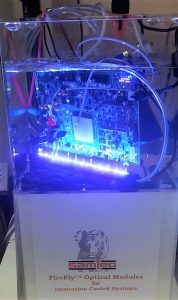
Photo Credit: blog.samtec.com
Single-Phase Immersion Cooling
This cooling method puts servers lined up vertically in a coolant bath initiates the transfer of heat. The bath is made of electrically non-conductive fluid (dielectric). The direct contact of coolant to the server enables the easy transfer of heat.
When heat is transferred, it vents on top of the racks. After exit, heated coolant will circulate through the CDU. The CDU is connected first to a warm-water loop. The loop functions as the final gateway for heat removal. It has existing chilled water to transition the warm liquid to a colder one.
Ultimately, once the cool liquid is achieved, it returns to the data servers through the same heat exchanger. Single-phase immersion cooling is considered to be a straightforward cooling option. As a direct benefit from its simple mechanism, it makes it more affordable, user-friendly, and does not require a rigid maintenance process.
The Pros and Cons
- Complexity – Using rear-door heat exchangers veers away from raised floor requirements. Although raised floors are not a concern, data center design is still a priority in incorporating RDHx. Aisle containments, ceiling structures, and plenums will need to be planned strategically to fit in the RDHx cooling system.Immersion cooling is a simpler alternative to the two. It has less moving parts and is ideal for ultra high density with the ability of cooling up to 100 kW per rack. It also does not require fans, so power consumption is reduced to a minimum.
An immersion-cooled ICEraQ system, for example, streamlines the cooling power of a data center. The immersion cooling system provides easier server access, which hastens the chilled air circulation.
- Efficiency – Because the RDHx system relies on air to cool a data server, its cooling efficiency may not be premium. Air is considered a bad conductor of heat.Highly dense server racks will need a larger compressor to do the cooling job. The system will also need additional fans for higher airflow requirements.
With a combination of the compressor and fans, RDHx can achieve a power usage effectiveness (PUE) of 1.2 to 1.3.
In a single-phase immersion system, the servers are directly immersed in dielectric fluid. This type of coolant has superior thermal conductivity. Such a feature enables a higher heat pickup.
Because of the dielectric fluid bath, the need for the compressor is negated. Server fans are also not necessary. Such an arrangement can eliminate around 10-30% of server power. Given this system, immersion cooling accounts for about 1.03 PUE.
The PUE accounts from using RDHx are not relatively significant to compare to single-phase immersion. Considering that there’s lesser input in the latter, a 1.03 PUE is deemed remarkable already.
- High-Density Performance – Because organizations nowadays are scaling up their data centers for optimal operations, high-density performance is required. With the increase in density, it is inevitable to have increased heat levels as well. This is a crucial indicator in selecting a suitable cooling method in a data center. RDHx may be a short change to cooling high-density servers. Usage of RDHx is suitable for 25-30 kW rack densities.
With increasing hardware, servers can hit 30 kW per rack. This may be a stretch in operations, cost, and maintenance when using RDHx. Ultimately, the cooling capacity will be spread thin as well.
A runaway winner in cooling high-density data servers is immersion cooling. A Single-phase system can efficiently cool up to 100 kW per rack. Using a chilled water system, the system can cater to 200 kW server racks.
Immersion cooling is also feasible for varying server densities. With an array of density layouts, single-phase immersion can facilitate the cooling process without compromising the racks.
- Reliability – Usage of water or refrigerant is the primary disadvantage of the RDHx system. It has significant safety concerns that limit its reliability. Because of the liquid components, leaks are inevitable. This is especially glaring for poorly laid out data servers. The use of refrigerants is an environmental hazard as well. The standard qualification will tag this as red flags. Given that single-phase immersion has only about three moving parts, the reliability score is relatively high. With few moving parts, it is easier to monitor. In terms of specific cooling concerns, the servers are fully immersed, so there’s less probability for heat residues in the server racks.
The Verdict
Single-phase immersion cooling is hands-down a more viable option. But there are many factors in selecting a cooling strategy. Variables such as infrastructure, budget, power density come into play.
Despite the many advantages of immersion cooling, deciding to use its base on that merit alone will warrant lesser returns in the future. In the end, cooling strategies are made to complement the data servers. It is essential to lay down the foundation of the data first then select the best fitted, cooling method for it.
Moreover, data server operations do not end in cooling systems alone. Additional activities are necessary to run the servers smoothly. Often these activities are iterative, so defining the simplest method to conduct it is a must.
This is true for environmental monitoring of your data center.
Supplementing Cooling Methods Through Foolproof Monitoring
Because all concerns boil down to eliminating heat, temperature monitoring is an essential monitoring indicator. A robust cooling strategy will need the help of sustained and fact-based monitoring solutions.
Currently, most data centers rely on temperature tracking through wired or wireless sensors. These tech solutions have easy install features relevant to your monitoring needs. There are specific monitoring capacities these sensors can provide. The AKCP monitoring solution, for example, can provide a comprehensive environmental scanning to a data center.
Cabinet Analysis Sensor
The AKCP cabinet analysis sensor can thermal map, detect cabinet hotspots, and record differential pressure.
The data recording gives a visual representation specific to any data server. If the data center layout follows a hot or cold aisle containment, sectional viewing of the racks and containment aisle is also possible.
Airflow Sensor
The ACKP airflow sensor can be placed in the air stream to monitor the status of flowing air. In the RDHx system, placing this sensor close to the heat exchanger can account for precise airflow reading.
sensorProbe+
AKCP’s sensorProbe is capable of remote environmental monitoring. Utilizing AKCP Rack+ Data Center sensors will ensure optimal parameter status. Whether it be temperature or water leak detection, even air pressure, the sensorProbe+ is a valuable tool to get comprehensive server rack monitoring.
Cooling Method + Monitoring Solutions
Incorporating the right cooling strategy for your data center couples with monitoring solutions is a foolproof way of optimizing it. The use of these technologies will mean less downtime and a longer life span for your data center.
Reference Links:
https://www.grcooling.com/blog/data-center-cold-wars-part-4-single-phase-immersion-cooling-versus-rear-door-heat-exchangers/
https://www.4d-dc.com/insight/immersion-vs-rear-door-cooling-for-hpc-systems

